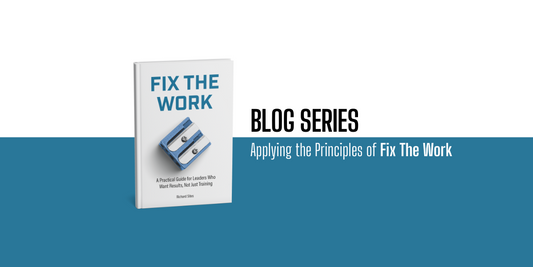Making Effective Contributions
Richard SitesShare This Post

[An excerpt from UPTRAIN: An Executive's Guide to Making Powerful Training]
Being aware of your roles and actively participating in T&D is just the start. You now need to think about how you will perform in each of these roles. How will you make effective contributions?
UNDERSTANDING YOUR BIASES
First things first. You must address your misperceptions about training.
“What biases?” you might ask. “I’m not a training expert. I don’t know anything about training.”
Wrong! All of us have gone to school. Most of us attended grade school, some of us attended college, and a few more of us were masochistic enough to go to graduate school. During our years in school, we developed perceptions of what we like, what we don’t like, and what we feel is best and worst when it comes to educational and instructional events.
These biases can be dangerous if we are not aware they exist. And again, I promise you, they do! In all of us.
Some of us like a classroom setting, where we can network with the teacher and other learners.
Some of us prefer structured online learning experiences, so we can work at our own pace and on our own time. Some of us like to gain knowledge through self-directed efforts. Some of us like text-heavy content, while others prefer multimedia.
This is because we are human. We are all different and have had different experiences in life and work. If you’ve been lucky enough to have amazing learning experiences in the past, you should consider what made them so great for you. Then think about whether others who received the same experiences felt as strongly as you did.
It’s likely they did not. Because learning solutions aren’t one-size- fits-all.
CHALLENGE EVERYTHING!
My mantra, for some time, has been Challenge Everything! That goes for my own ideas as well.
You’re an executive. An organizational leader. Your team brings thoughts and ideas to you. All. The. Time. And when these ideas center on an area you’re unfamiliar with, it’s so easy to turn off your decision-making capabilities and assume someone else has the answer. Or to presume that you don’t have the time to research all your available options. Or to say to yourself, “I’ve hired people to take care of these things.”
But if your organization struggles to produce good results, your active participation is needed. That’s why you should Challenge Everything! It’s one of the most effective ways to improve your training outcomes.
On the other hand, if you’re not careful, it’s also a way to kill good ideas or waste time spinning your wheels. That’s why you need a method. A strategy for challenging things.
Just be careful that you’re thoughtfully selective about what to challenge and what to bypass. Feel free to challenge the selection of Pepsi products in the vending machine. Feel free to challenge the depressing taupe color they used to paint your office walls. But keep in mind, simply being obstinate won’t produce results.
So, when your training and development team makes a claim like this…
“We need to redesign the sales training from top to bottom.” “The onboarding program needs a facelift.”
“We’re kicking off a new video-based training program, and it’s only going to cost us $1.2 million!”
…you should have a system to intelligently challenge these ideas.




